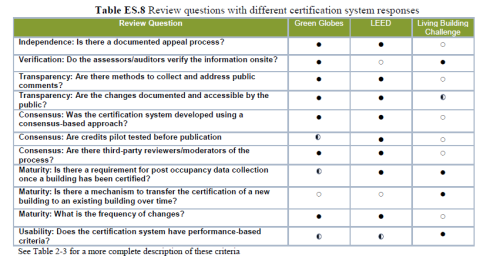From the “Disappointing But Not Surprising” desk of the Columbus Dispatch, an expose reveals how anti-LEED legislation in Ohio was “largely written by chemical industry lobbyists.” That legislation, Senate Concurrent Resolution 25 (SCR25), has been covered in detail by this resource.
It’s no surprise that narrow self-interest is behind the anti-LEED effort. Other publications have noted that the American Chemistry Council (ACC) is “actively trying to undermine LEED, and there’s a lot of dirty money at play. From 2007 to 2013 … this single organization invested a total of $62 million in influence-peddling.”
It’s also no surprise that lobbyists get paid to write legislation to benefit their clients, or that such legislation is fed to pliable politicians to push the agendas of their benefactors.
What’s disappointing is the brazen obfuscation of the true protectionist motive behind SCR25. It would restrict Ohio public agencies to only those rating systems “that meet ANSI voluntary consensus standard procedures,” such as Green Globes. An intensive comparison of LEED to Green Globes found that, “[b]y nearly every measure, Green Globes and GBI [the group behind Green Globes] come up lacking… Green Globes is one or more steps behind LEED in technical rigor, its process is less likely to push projects… and, organizationally, GBI is allied with the timber and chemical industries, which spend millions each year in Washington lobbying for anti-LEED policies.”
Obviously SCR25’s champion Senator can’t just come out and say that he’s carrying the water for a well-connected lobbyist who’s cashing checks from the same industry insiders whose rating system of choice would benefit from eliminating LEED as competition. Instead, as the Dispatch reports, the lobbyist fed the Senator “a list of talking points to use in favor of” SCR25. Presumably these talking points included jobs, as the Senator robustly declares that “SCR 25 seeks to preserve jobs,” and the Senator insists that “putting Ohio jobs at risk is unacceptable.”
Exactly what jobs are at risk, Senator? Neither the Senator, nor the lobbyist, nor any proponent of SCR25 identified one job under threat from LEED. Nowhere in the record is any data to substantiate the scare tactic talking point. The latest version of LEED basically just incents transparency in certain building materials, and among the many job-creators on the record in opposition to SCR 25 and/or in favor of LEED are Nucor Steel, Eaton, Owens Corning, United Technologies Corporation, Johnson Controls, Ingersoll Rand, GAF, Siemens and Saint-Gobain.
Fortunately the voices of business and reality were eventually heard, and SCR25 should die a merciful death in committee. But this story starkly illuminates how our system works, and how it almost worked against competition in the sustainable design and construction arena in Ohio. To quote business owner and SCR25 opponent Karen Joslin,“[t]his is so disgusting. I hate how the process works.” Couldn’t have said it better.
Shady Politics, Part II (11.16.14): In a tangentially related article, Columbus Dispatch reporter Dan Gearino reveals that top-level officials in Gov. Kasich’s office failed to release a state-funded report containing favorable green jobs data until after public discussion had concluded on SB310 (legislation that puts a two-year freeze on state standards for renewable energy and energy efficiency). The administration spokeswoman claims that the timing of the report’s release, on the very day Kasich signed SB310, was “coincidental.”








